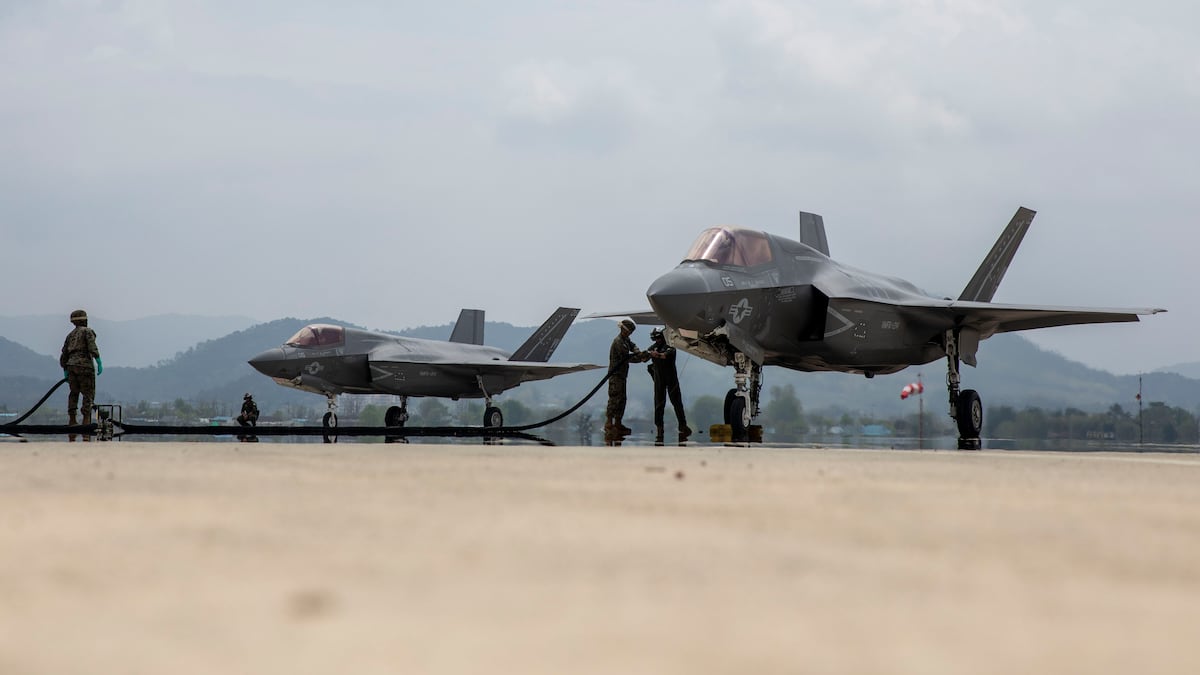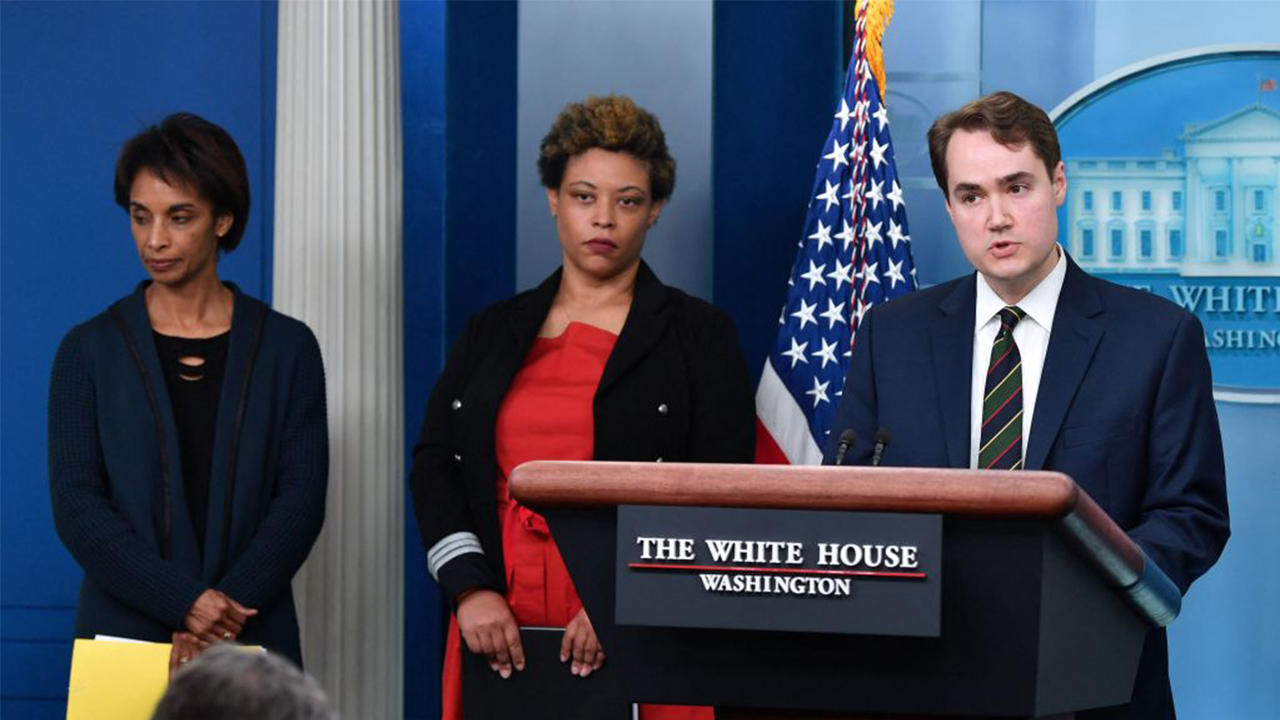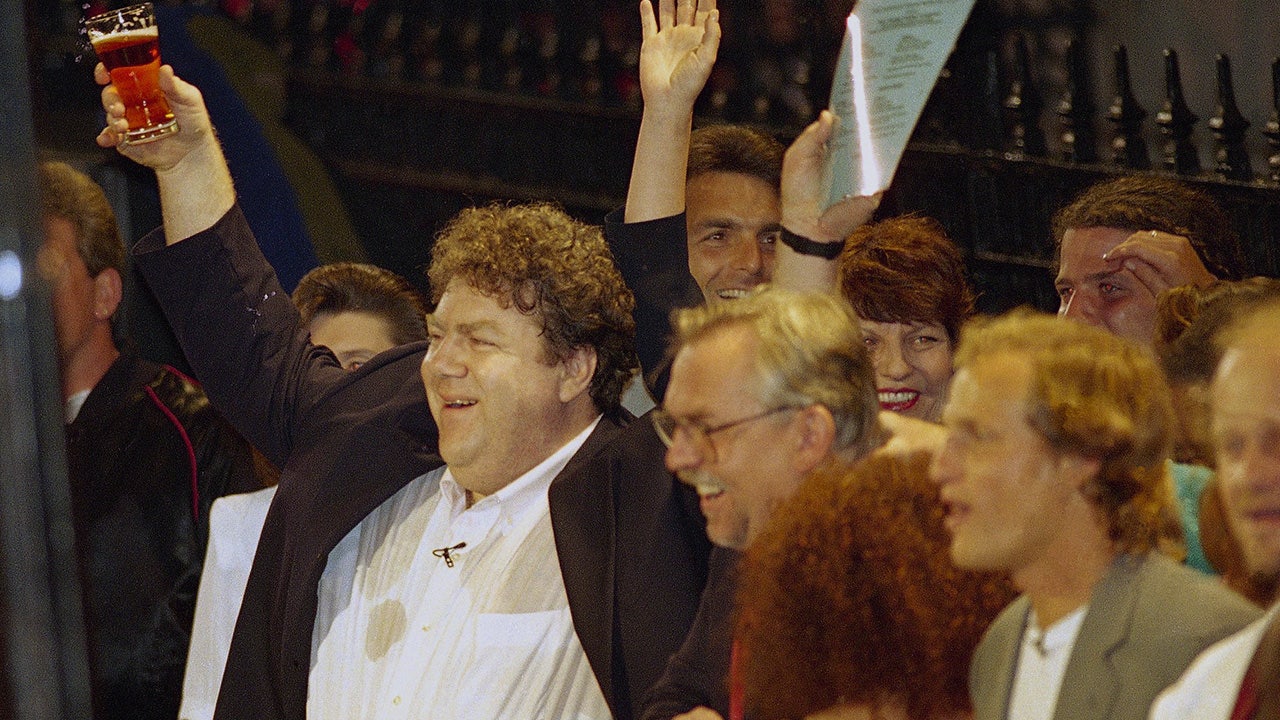With new jets, Marines need new weapons for future fights

The Marines are closing in on their goal of having a full, fifth-generation fighter jet fleet. However, those new jets are still equipped with 1980s-era weapons technology.
That’s an area Marine aviation leaders such as Lt. Gen. Bradford Gering, deputy commandant for aviation, and Col. Derek Brannon, director of the Cunningham Group, are looking to industry for help.
“We are killers, at the root, we are Marines,” Brannon told the audience at the Modern Day Marine military exposition in Washington on Wednesday.
Alongside upgraded weapons and munitions options for the Corps’ growing fleet of F-35B and F-35C fighter jets, the two aviation leaders also noted recent lessons learned for distributed air operations.
RELATED
A West Coast-based exercise called upon entities across the Marine Corps to work out how distributed aviation operations would work in that theater.
The next tabletop exercise is slated for Europe in the coming year.
Some of the key lessons learned are a need for more virtual and live training options, decision-centric aviation operations driven by data using large language models to work out scenarios, better plans for communication and power generation and timing and controlling the tempo of the need for camouflage, cover and concealment.
Artificial intelligence and machine learning will play a crucial role in those next steps.
“We’re pursuing those really hard right now because it’s all about data,” Gering said.
The three-star provided an example of using such tools for predicting aircraft component failures and adjusting supplies to fit accordingly.
“What you can do then is make decisions with that aircraft,” Gering said of employing various platforms.
The same moves are key for what aviation units will take with them. By understanding the full picture of maintenance and supplies, units can know what to pack and potentially take less, leaving a smaller footprint, he said.
On the jet side of aviation, the Marines expect to complete purchasing 95 of the KC-130J cargo planes over the next five years.
Eleven squadrons — two training and nine operational — now fly the F-35 Lightning II jet, a fifth-generation fighter. The Corps will build another seven active-duty squadrons over the next five years, which will be supplemented by two Marine Reserve squadrons.
Once completed, there will be 18 active squadrons, a dozen flying the F-35B and six flying the F-35C. The two Reserve squadrons will fly the C variant, which is built for aircraft carrier takeoff and landing. The B variant can conduct vertical takeoff and landing.
The AV-8 Harrier jet will sunset this year, Bannon said. The F/A-18 Hornet will sunset in the next five years.
Todd South has written about crime, courts, government and the military for multiple publications since 2004 and was named a 2014 Pulitzer finalist for a co-written project on witness intimidation. Todd is a Marine veteran of the Iraq War.







